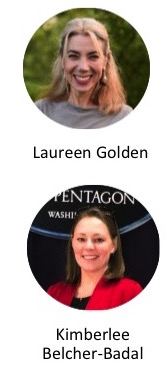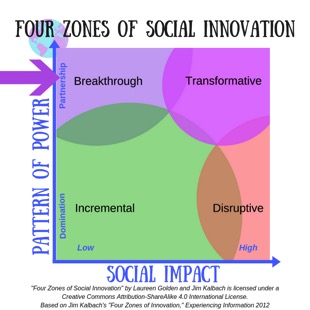By Laureen Golden, MEd, LCSW and Kimberlee Belcher-Badal, PhD, Partnership Community
Why Talk about ?Patterns of Power? in Childhood and Family Relations?
 Systems of domination are perpetuated by adults exercising power over children1. ?No amount of external physical coercion could ever be enough to sustain [domination?s]2 rule without [its] messages getting internalized. . . [which] is why [such] system(s) control both the upbringing of children and the stories that propagate in the culture 3.?
Systems of domination are perpetuated by adults exercising power over children1. ?No amount of external physical coercion could ever be enough to sustain [domination?s]2 rule without [its] messages getting internalized. . . [which] is why [such] system(s) control both the upbringing of children and the stories that propagate in the culture 3.?
The work of social systems scientist Dr. Riane Eisler advocates a shift in worldview from a domination (power over) to a Partnership (power with) system. Awareness of domination/partnership patterns of power in family life elevates children and family relations as key for social transformation. ?How a society constructs early childhood relations [is a] fundamental social issue that directly impacts whether all our social institutions ~ from the family, education, and religion to politics and economics ~ are inequitable or equitable, authoritarian or democratic, violent or nonviolent 4.?
Why Talk about Patterns of Power in Social innovation?
?Social innovation? is defined as ?a novel solution to a social problem that is more effective, efficient, sustainable, or just…[where] the value created accrues primarily to society as a whole rather than private individuals 5.? Initiatives shifting patterns of power from domination to partnership are some of the most promising social innovations of our time, as the cost of domination can no longer be denied, much less sustained.
Typically, social innovation conversations are limited to simply weighing low versus high impact proposals. ?The concept of domination/partnership enables people to discern between incremental innovations creating modest changes to the status quo, and breakthrough innovations that actually shift patterns of power and propel humanity towards a Partnership World. As patterns of power become part of the social innovation conversation, we believe:
- People using Partnership patterns with children and families will self-identify as social change agents
- People funding social innovation will elevate the realm of childhood as essential for meaningful and lasting social transformation, and
- Social Innovations cultivating a Partnership world will ?see each other and imagine, ?What might be possible together, that none of ?us can do alone??
 What Social Innovations are Cultivating a Partnership World?
What Social Innovations are Cultivating a Partnership World?
The following ?Breakthrough Innovations? are championing childhood and family relations. Although not yet widely recognized as ?social innovation?, they are enabling the re-emergence of a Partnership world:
- Paradigm-Shifting Initiatives (Child and Family Relations)
- Paradigm-Shifting Thought Leaders
- Paradigm-Shifting Pedagogies
- Paradigm-Shifting Support for Emotional/Mental/Social Wellbeing
- Who?s Missing? Visit Healing Our World to add others who are part of this movement of movements championing childhood and family relations!
Laureen Golden and Kimberlee Belcher-Badal are founding members of?Healing Our World?(H.O.W.). Recognizing there is so much to learn about creating change and so few places for exploring how, Healing Our World?provides a curated environment supporting change makers and illuminating ?Breakthrough Social Innovations.”
Footnotes
1. Noting that “prejudice has to be recognized in order to be overcome,” Elizabeth Young-Breuhl named and described ?childism? as “a prejudice against children on the ground of a belief that they are property and can be controlled, enslaved, or removed to serve adult needs.” Young-Bruehl, E. (2013). Childism: Confronting prejudice against children. New Haven, CO: Yale University Press.
Similarly, Barry Checkaway noted that ?except for prisoners and a few other institutionalized groups, young people?s lives are more controlled than those of any other group in society…Adults reserve the right to punish, threaten, hit, take away ?privileges,? and ostracize young people when they consider it beneficial in controlling them or “disciplining” them. If this were a description of the way a group of adults were treated, society would quickly recognize it as a form of oppression. Adults, however, generally do not consider [this] to be oppressive, because this is the way they themselves were treated as youth; the process has been internalized.? Checkoway, Barry, Adults as Allies (1996). Partnerships/Community.
2. Miki and Arnina Kashtan use the word, ?Patriarchy,? as they see patriarchy as the original basis on which all forms of domination developed. To maintain flow and cohesion of concept within the Partnership Studies field, we?ve substituted the term ?Domination? for ?Patriarchy?.
3. Kashtan, Miki and Armina. Parenting Without Obedience: A Preliminary Guide to Intergenerational Collaboration. Link for this article is imminent and forthcoming in Tikkun magazine. See also, Kashtan, Miki. From Obedience and Shame to Freedom and Belonging: Transforming Patriarchal Paradigms of Child-Rearing in the Age of Global Warming.
4. Riane Eisler, Breaking Out of the Domination Trance, Kosmos Quarterly.
5. Phills, J. A., Jr., Deiglmeier, K., & Miller, D. T. (2008). Rediscovering Social Innovation. Stanford Social Innovation Review, (Fall). Retrieved from https://ssir.org/articles/entry/rediscovering_social_innovation.





?It?s that domination thing!? ?
In the classroom children will call out when they make connections; I can imagine hearing, ?There, there is domination! Humankind over Nature!? or race over race, or religion over religion, or man over man, or man over woman. Stories that propagate in the culture can be changed if recognized and called out. At home or in a classroom evidence of domination abounds in history lessons and in literature from ?Cinderella? and ?Last Stop on Market Street? to ?Romeo and Juliet? and ?The Hate U Give.?
Now, I?ve recently come to appreciate, it is just as important to guide adults as well as children to recognize and call out what seems to tie us all up into knots. When I check out any half-dozen current news stories I find myself saying, ?There?s that Domination thing!?
Back to children at home and in the classroom??Children Are The Future.? Let?s help them begin to pick out the knots and avoid them in the first place by recognizing them and calling them out.
Thank you for this posting!
(Recommending ?Tomorrow?s Children.?)
So happy to see and read Laureen Golden!
Here’s to “long” time, online friends and acquaintances!
Thank You for this excellent article and collection of networked people and ideas. This is an most perfect example of ‘calling in’ which is the necessary pendant of ‘calling out’ – an idea I recently learnt came across in the conversational webinar I attended in part (‘The story of the future’).
This resonates with our family’s experience with Jane Nelsen’s ‘Positive discipline’ that helped us get out of the power struggle we we getting into in our young family. I’m also thankful to the Learning Tree, the Montessori school who taught us so much about parenting with, for and through freedom, equality, empathy and manipulation-free love. Beautiful work, well done. Please send out more!